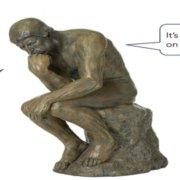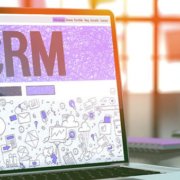More Tech Stack Tips for Senior Living Marketing

Recently, I had the privilege of participating in a panel discussion at the Senior Housing News sales and marketing conference in Tampa alongside Sherrie Bebell and Wade Goodman.
The session, “Tech Stack Transformation: Innovating Senior Living Sales & Marketing in 2024,” offered a fascinating look into the collective drive to enhance the prospect experience, minimize decision-making friction, and refine the integration of marketing and sales for improved lead quality and conversion rates.
Of course, choosing the right tech stack can be challenging for senior living marketers since many legacy technologies haven’t adapted. Not to mention, there are so many new bright and shiny things to choose from.
We recently shared an article about the tech stacks all senior living marketing and sales teams should use. Now, let’s take a deeper look at three critical areas (and let’s use a fun analogy to explain them: shopping malls).
What do shopping malls have to do with your senior living community’s tech stack anyway?
Like shopping malls, today’s marketing tech stack has anchor stores, lots of smaller boutique shops, and a food court in the middle.
In this shopping mall analogy, the senior living website and CRM are at the ends of the mall, anchoring the smaller boutique shops. The marketing automation platform is the food court—it feeds the marketing machine. The small niche shops are your website chat, surveys, blogs, floor plans, videos, and so forth—the stuff that engages prospects as they pop in and out of their shopping experience.
Just as malls have had to rethink their structure to remain competitive, senior living operators should rethink their three anchor technologies: website, CRM, and marketing automation.
Outdated website? Here’s what to do next . . .
If your senior living website hasn’t been updated in over three years, consider this your sign for a makeover. Modern prospects expect a mobile-first, fast, intuitive, and easy-to-navigate online experience that allows them to research anonymously.
When doing your website makeover, emphasize original photography, comprehensive 3D floor plans, transparent pricing, trust signals like reviews, and robust educational content to keep prospects engaged and loyal to your brand.
Build your site on WordPress, own your hosting license, and avoid falling prey to proprietary websites that you cannot access and do not own.
Learn more about the ins and outs of effective senior living websites here.
Crappy CRM? Time to upgrade . . .
A great senior living CRM integrates with your chosen marketing tools, including your marketing automation, email marketing, chat (live or widget), surveys, call tracking, third-party aggregators, call center (outsourced or internal), Google Analytics, and social media.
The best CRMs also allow integration of choice rather than limiting the selection to only their preferred partners, which they monetize through forced bundling.
Today, with open APIs, Zapier, and custom middleware, operators should expect their CRM technology partner to provide bilateral integration with all marketing tools and platforms.
If your CRM doesn’t offer all of the above, it’s time to upgrade.
Is your marketing automation too basic? Time to upgrade here as well.
Your website (along with Google Analytics) should be able to capture the initial prospect journey information, such as lead attribution sources, most visited pages, entry and exit points, and conversion insights (where and how prospects are converting from anonymous website visitor to lead).
Your CRM picks up the prospect when they have advanced to a sales-qualified lead and documents all sales activities, effectively closing the loop when prospects advance to move-ins.
Your marketing automation, however, is the engine in the middle that works 24 hours a day to nurture and advance prospects throughout their journey. The connection between each of these three platforms ensures that there are no blind spots in the prospect journey and that no lead is left behind.
We recommend HubSpot above all others because of its reporting capabilities and the marketing dashboards you can create by ownership group, portfolio, region, and level of care. These dashboards allow you to visually display the entire lead pipeline by stage. You can see the ROI of every marketing dollar spent by channel, which is critical intel.
Don’t forget to integrate bespoke experiences for added panache, personalization, and conversions.
To complete our analogy of comparing the martech stack architecture with a shopping mall configuration, we can’t forget the smaller boutique stores that connect the anchor stores and the food court.
In our analogy, these would be all the third-party integrations that plug into your tech stack, including chat, surveys, call tracking, videos, map features, and the like.
Just as mall shoppers pop in and out of the niche store as they move between the large anchor chains and the food court, senior living prospects will use these tools when they visit your website.
Our approach to creating this foundational tech stack for our clients
Our clients have enjoyed great success using WordPress CMS, HubSpot marketing automation, and Welcome Home CRM. This combination of products provides complete visibility into the prospect’s entire journey.
From there, we can reverse-engineer move-ins to better understand:
- The original lead attribution source
- All the touchpoints along their decision path (engaging with social, paid, content, video)
- Measure their engagement (number of website visits, landing page conversions, content downloads, and emails opened and clicked)
- The number of days between first conversion and tour, first conversion and move-in, and tour-to-move-in by persona and level of care
Ready to rock your senior living marketing tech stack?
For communities that want to increase their lead generation and conversion rates, embracing a well-rounded tech stack is key. And we can help! Schedule a brainstorming call with us today, and let’s explore how we can transform your marketing tech stack.











